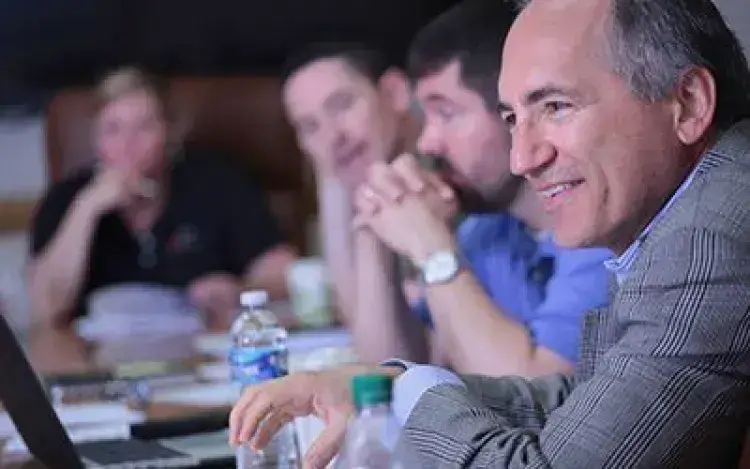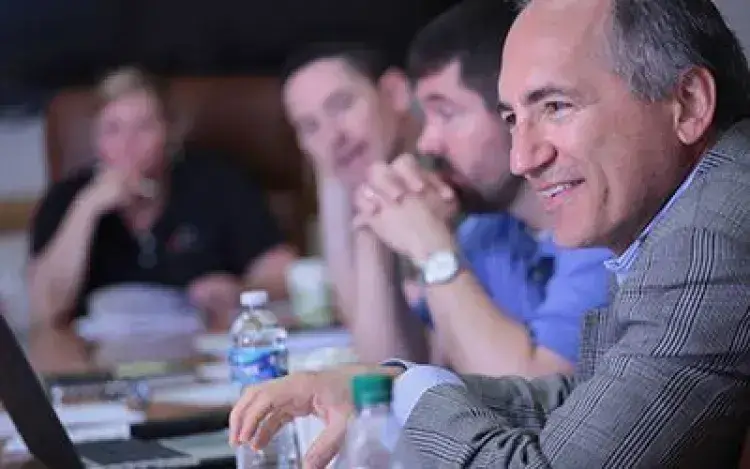
Achieving Minimal Blowback and Maximum Buy-in
Case Study

The Challenge
Emergency physicians often have deep and emotional ties to the communities they serve. So when they learn that their administration is switching emergency management groups, thereby introducing the possibility that they must adapt to a new employer, or have to move on, there is a great potential for stress, as well as push-back on both the administration and the new group.
Even if the hospital’s administration is convinced that opportunities exist to significantly improve quality of care, efficiency, and the hospital’s bottom line by bringing in new management, the decision to do so is often fraught with the risk of alienating key hospital and community stakeholders, and possibly of losing them entirely.
For the incoming management group, the period of transition is crucial to their overall success. During the time just before, during and after they assume control, trust within the community can be weakened or strengthened, quality physicians can be retained or lost to other hospitals, and emergency department culture can be energized or left to deteriorate.
USACS’ New Campus Transition Process has therefore been carefully de-signed to mitigate the possibility of blowback from community and hospital stakeholders, ensure a smooth transition period for hospital leadership and establish a positive new culture within the ED, which will form the basis for successful implementation of new processes and quality initiatives to come.
The Solution
THE IMPACT STUDY
USACS’ “Impact Study” applies the “power mapping” process that is used by political organizations to build support and influence decision making, applying it to mapping the relationships within and around the hospital. The goal of the Impact Study is to give hospital and USACS leadership the best possible understanding of where potential pitfalls may lie, as well as where there are opportunities for positive influence.
The Impact Study takes place before any public announcement has been made of the switch in ER groups and includes the following steps:
- USACS works with hospital leadership and their executive assistants to develop a list of all key members of the hospital community, including ER doctors, and significant or influential leaders within the hospital. This list can also include hospital board members, community leaders, or the heads of groups connected in any significant way to the hospital or former physicians’ group.
- Together with hospital leadership, normally in a 2-hour private meeting, each influencer on the list is graded according to their degree of influence, and their potential support for or opposition to the coming change. These grades are entered into a flexible database, along with their positions and contact information.
- Following the grading process, leaders from the hospital and USACS are assigned to each one of the influencers in order of priority, and an action plan is developed that determines how and when each will be approached with the news. For example, a highly influential individual with a strong propensity to oppose the change may be approached in person by the hospital CEO before a public announcement is made to discuss the change and mitigate their concerns. Conversely, someone with lower influence who doesn’t have a strong preference either way can be approached with different strategies.
- Working in partnership with hospital leadership, USACS establishes a coordinated set of talking points with which to approach key influencers. In addition, USACS develops a series of answers to questions which are likely to be asked during these conversations. These could includes questions regarding compensation and hours, ownership structure and opportunities, or which physicians may be retained or not.
The Results
48 HOUR SPRINT STARTS RELATIONSHIPS ON THE RIGHT FOOT
THE 48-HOUR SPRINT
In the 48 hours after a public announcement is made, USACS leadership focuses expressly on the existing physicians, nurse practitioners, and physician assistants within the Emergency Department. The goal is to meet with current providers, guided by insights gleaned from the Impact Study, and ensure that a transition that can be fraught with anxiety for current providers be as smooth as possible.
During this period there are two separate days in which members of the USACS executive team are available without appointment within the new hospital so that providers and employees can ask questions and express concerns in person.
In order to ensure this time is well spent, USACS distributes employment agreements to prospective employees prior to the meetings. This focuses the discussion on the nuts and bolts of what the change will mean for the existing providers, including how their pay and time commitments will change, potential benefits and leadership opportunities, and any other areas of concern.
Providing this open forum at the employees’ convenience is designed to establish trust. Combined with providing consistent messaging at all levels of the organization, the 48-Hour Sprint will do much to set key relationships off on the right foot. Many current USACS physicians who had worked for the previous physicians groups say this period of transition made an enormous impact on allaying their fears and concerns about the change.
IMPARTING THE USACS WAY
In the immediate weeks and months following assumption of full management responsibilities, USASC sends ambassadors of USACS’ unique corporate culture to work shifts in the Emergency Department. These often include USACS senior partners and members of the executive team. Besides providing USACS leadership up front, this approach gives USACS executives hands-on exposure to the challenges at each new hospital campus. At the same time, the immediate and unfettered access to USACS senior leadership provides new employees every opportunity to raise their concerns and experience USACS corporate culture in action.
USACS’ cultural ambassadors are strategically scheduled, so as to ensure they get maximum interaction with employees, pulling every kind of shift, weekends and nights included. Even months and years after USACS has taken over management, USACS continues to send senior leaders to work shifts in the ER. This practice in many ways forms the foundation of establishing USACS transparent, teamwork-oriented way of practicing medicine and doing the business of the ER, and sends a powerful message to all levels of the organization.
NEW PARTNERSHIPS
NEW OPPORTUNITIES
If you’d like to explore all USACS can offer your facility and join our nationwide network of partners, contact us today.
